| Case Study
Daimler Chrysler Commercial Bus
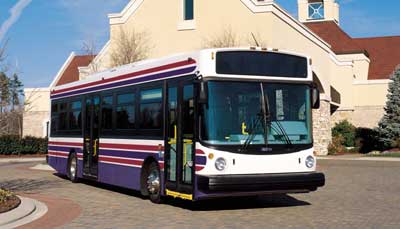
The challenge: Take a conventionally wired bus and convert
it into a fully multiplexed bus.
In today’s competitive market place
engineers are seldom afforded the luxury of being able
to completely redesign a product. More often than not
all engineering time is spent in support of existing
product, designing customer specified options and putting
out the day-to-day fires. At Class 1 we realized that
this was just the case at Daimler Chrysler Commercial
Busses (DCCB). So we offered the unprecedented service
of taking one of their conventionally wired SLF 235
Super Low Floor Busses and multiplexing it. Since their
engineering time was at a premium and Class 1 wanted
to tap into new industries, the joint project was a
perfect match.
After receiving the SLF 235 at our facility
we went right to work. We identified the inputs and
outputs on the bus and insured that we understood the
functionality. Once the input output list was established,
we divided the vehicle into zones; the front power panel,
the dash, the drivers’ side panel, the left front
overhead, the right front overhead, the rear door area
and the rear overhead. At the request of DCCB engineering
we located all ES-Key nodes in the interior of the bus.
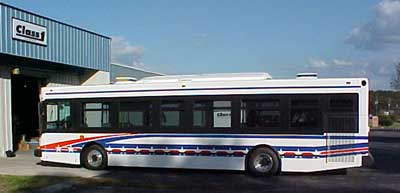
The front power panel zone is located
just inside the entry door. It is provided to DCCB as
a completed sub-assembly that allows them to simply
install and plug it in. In addition to handling both
12 and 24-volt power distribution for the front half
of the vehicle, it is also responsible for headlamp
control (with DRL), ramp and kneeling functions.
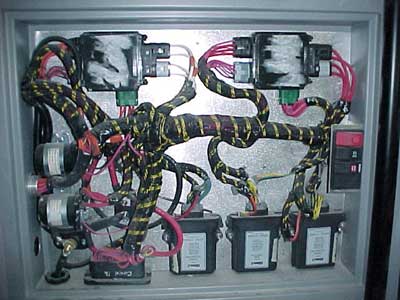
The dash area contains the USM and several
input and output nodes. The kneel and ramp controls
and all lighting switches are in the dash as well as
important operator indicators such as “check engine”
and “door open”.
The drivers’ side panel zone contains
the transmission ECU the ABS computer and three ES-key
nodes. The ES-Key nodes receive inputs from and give
outputs to the transmission ECU and the ABS computer
as well as receive inputs from the door control switch.
This is also an intricate sub-assembly provided by class
1.
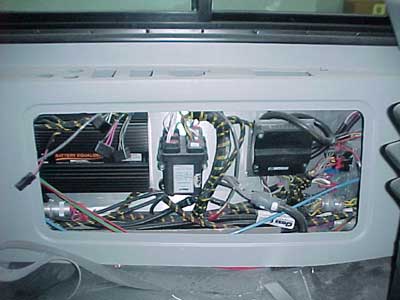
The left front overhead zone houses two
power distribution modules (PDM), the Es-Key information
center and the data logger. The PDM’s control
such functions as the left side interior lights the
stop request sign and the left side marker lights.
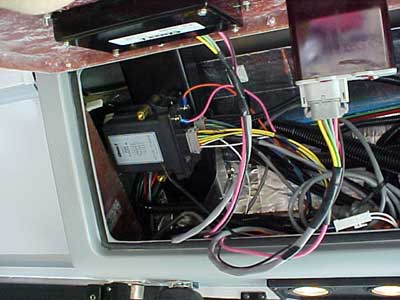

The right front overhead zone has two
more ES-Key PDM’s. They control right side interior
and exterior lighting as well as the front entry door.
The ES-Key system provides complete entry door control
eliminating the necessity to purchase a separate controller.
The rear door area zone has only one ES-Key
PDM dedicated to rear door control and lighting. The
rear door control is complete with sensitive edge operation
that will automatically open the rear door if an obstruction
is sensed during closure. The door remains open until
the operator intervenes by cycling the door control
switch.
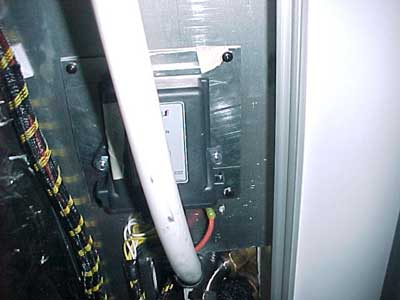
The rear overhead zone has several ES-Key
nodes and the rear bus 12/24-volt power distribution.
This is also provided to DCCB as a drop in sub-assembly.
The rear overhead zone is where the ES-Key system interfaces
with the engine and where all of the rear exterior lighting
is controlled. The engine interface even includes a
starter lockout feature that will not allow the engine
to be started unless all safety interlocks are met.

The end results were fantastic! We were
able to successfully multiplex the SLF 235, saving the
customer valuable engineering time and money. Besides
the obvious benefits of multiplexing, such as onboard
diagnostics, fewer light duty mechanical parts, and
many less electrical connections, DCCB realized a weight
reduction of over 150 pounds. That’s enough weight
to add another passenger.
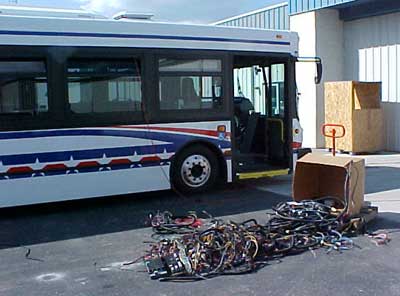
At the time of this writing we are approaching
200 “fielded units” with outstanding customer
satisfaction. Class1 would like to thank the people
at Daimler Chrysler Commercial Busses for the opportunity
to work with them. Their co-operation and commitment
to quality have proven them to be a force in the transit
bus industry.
|